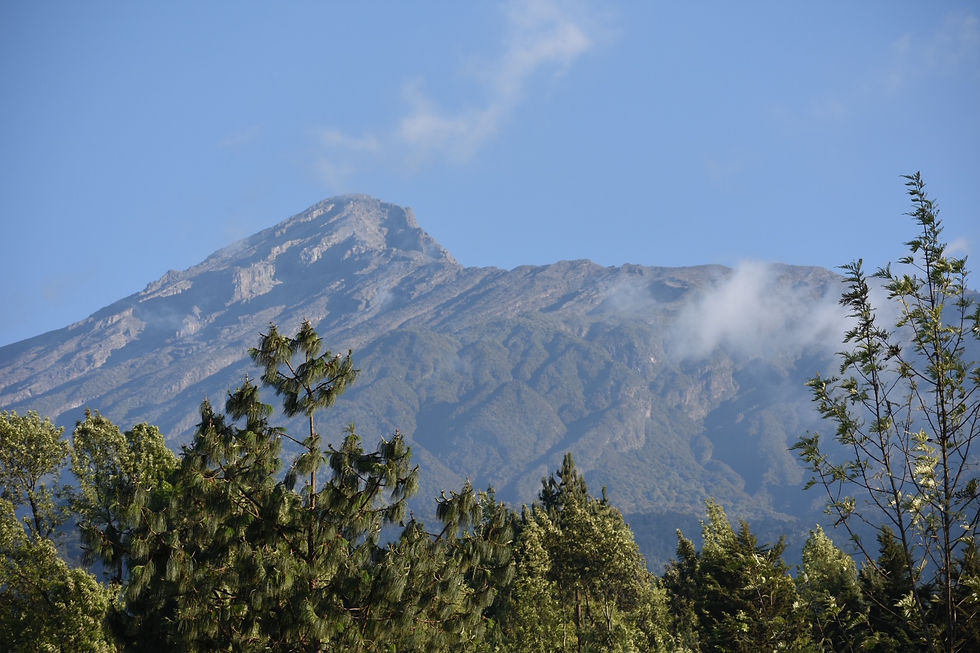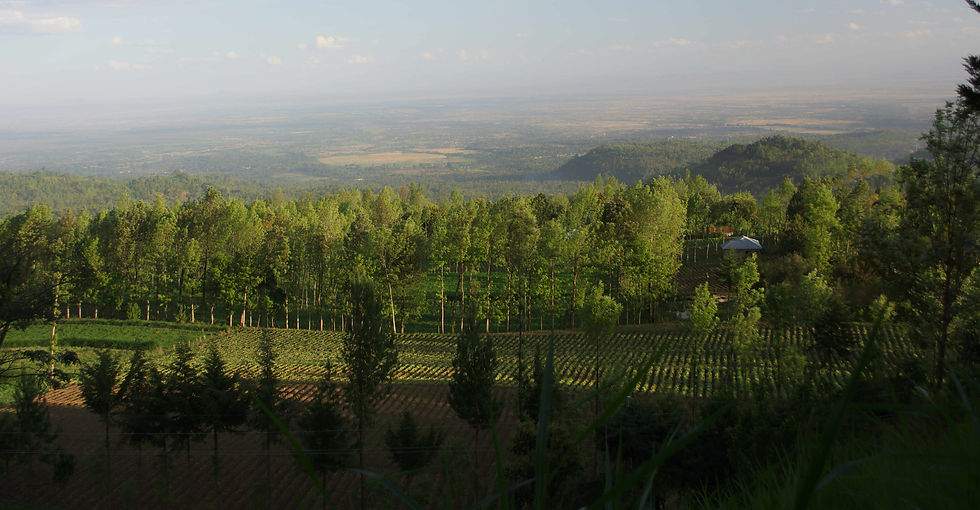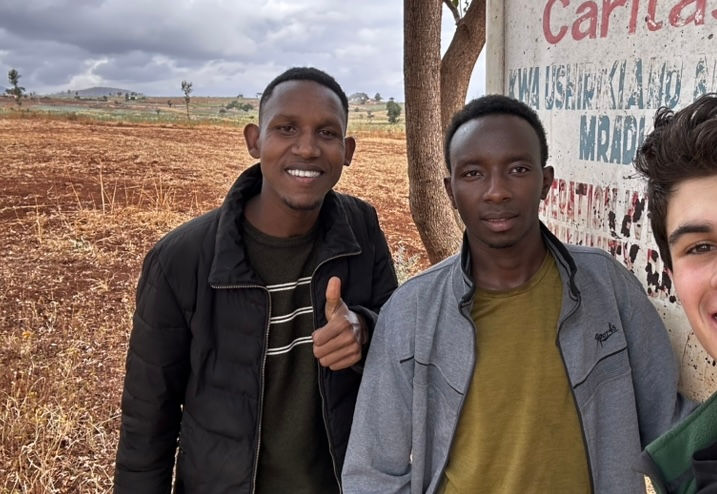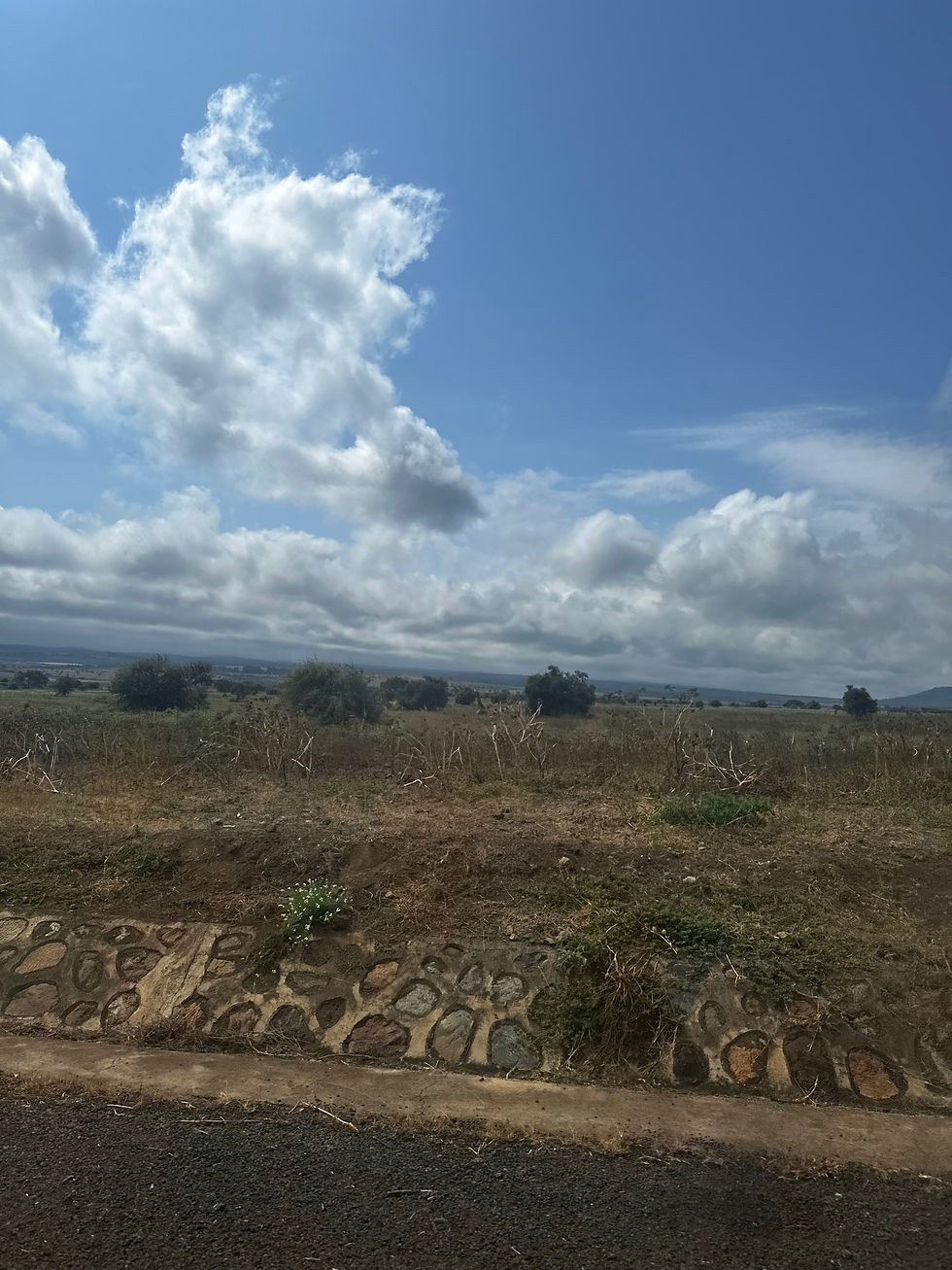On my arrival back from Longido, I expected Tengeru to be a pleasant break from sometimes-rough village life. Instead, I returned to find a city without power, and doused in an almost never-ending rain that made exercise impossible. The power in my devices slowly seeped away, and by evening I had resorted to sitting in the darkened corner of my room, waiting for the small bursts of electricity that would allow me to complete the writing and work I so desperately needed to do. The generator, too, had run out of juice right as I was taking my much-anticipated hot shower, which meant that once the sun went down, reading was near impossible. Twilight hours for me were spent contemplating in darkness, or out on the covered porch. On the second morning, however, there appeared a lucky break in the downpour, and I decided to take advantage of it with a hike. I met up with an old friend-- Frank, who I had toured with on my last visit three years ago, and who still wore the same baseball cap and permanent smile.

The faces of Mount Meru are vastly different. The northern face, from which Kilimanjaro and Kenya are visible, is a desolate, rocky slope. Giraffes and antelope roam among tall grasses and cacti reminiscent of the Serengeti plains--all visible from the Momella trail, the only route leading to the summit. However, the southern side, facing the prevailing wind, is quite the opposite: here, a vast rainforest rings the summit, home to elephants, leopards, and herds of buffalo. Below this forest are the most fertile lands in Tanzania, supporting vivid fields of radishes, potatoes, carrots, cabbage, kale, corn, and the most spectacular bananas and guavas. Below these farmlands extends the city of Arusha, the tourist hub of northern Tanzania and a growing business center for East Africa. Tengeru sits right on the border between city and country, which meant that Frank’s and my walk took us through the freshly-wetted farms ringing the misty peak.

Here the medicines were vastly different from even Longido. For the first time I saw flower petals used as medicine, something only a tropical climate can support. The leaves here were larger and richer than those in Maasailand, meaning that they were used more often than the roots by the local Meru population. However, I also saw the effects of the city and the farms on indigenous medicine and traditions. Frank, a born-and-raised Meru, could only name five of the present medicinal plants. A few others he recognized, but couldn’t place the name or the use. He himself admitted the farms made it difficult to find medicine growing in the wild. The issue presented itself to me again: everybody loves fertile land, including the plants, the cattle, and the farmers. In lush territory like the Meru highlands, something has to give. In most cases, it’s the wildlife and the local plants that previously supported the villagers.

On my last day in Tengeru, I woke up with an awful fever, always terrifying in Africa. The threat of malaria was always hanging like a dark cloud over my head, spurred on by the numerous mosquito bites on my back and arms. Despite my fears and my high temperature, I dragged myself to the car, and we set off to our next village, Kitenden. As we drove down the road, a hospital presented itself on the left and we decided to stop in. I received quite a few strange looks as I meandered with my guide to the front desk, where I was told to wait to receive a doctor. Finally the receptionist called my name, and I entered to get my test. A prick on the finger later, and I was thankfully out of the woods from potential malaria. The fever was still high, but the fear was over. As we drove into the night, the symptoms worsened, and I found myself drifting into an enforced sleep. A loud noise and sudden halt brought me back to my senses; yet again, the car had broken down. This was the final straw, I thought. With no power thanks to the energy situation in Tengeru, I sat shivering in silence as the men outside worked tirelessly to find a fix.

After what I later discovered was three hours, they gave up. Despite the apparent danger of motorcycles in Tanzania, I once again found myself zooming through the night on the way to a warm bed, just as in Osiligalai more than two weeks ago. I had wrapped myself in a parka and a blanket, but thanks to the worsening fever I still shivered violently from the cold as we finally reached my place of sleep. With no running water in the house, a hole in the window, and mosquitos buzzing above my head, I at last crashed into my bed in my clothes, glad to put the day behind me. Like everywhere in Tanzania, mishaps are never the fault of people, merely the equipment they are given. My guides are flawless drivers, and knowledgeable mechanics. But when an engine fails in the middle of Maasailand, on a dirt road at 11:00 at night, with wind and clouds threatening rain, there is only so much a flawless driver and a knowledgeable mechanic can do.



Max, you are getting a lifetime's worth of experiences in just this one summer. You health scare made me wonder if the Masai has a plant that treats malaria. When I think of you 'zooming' through the 'night' on the back of a motorcycle, shaking with a fever and I'm sure NO helmet, I start shaking with fear! I will be thinking of you tomorrow on your birthday. I want to see you again, so be wise.